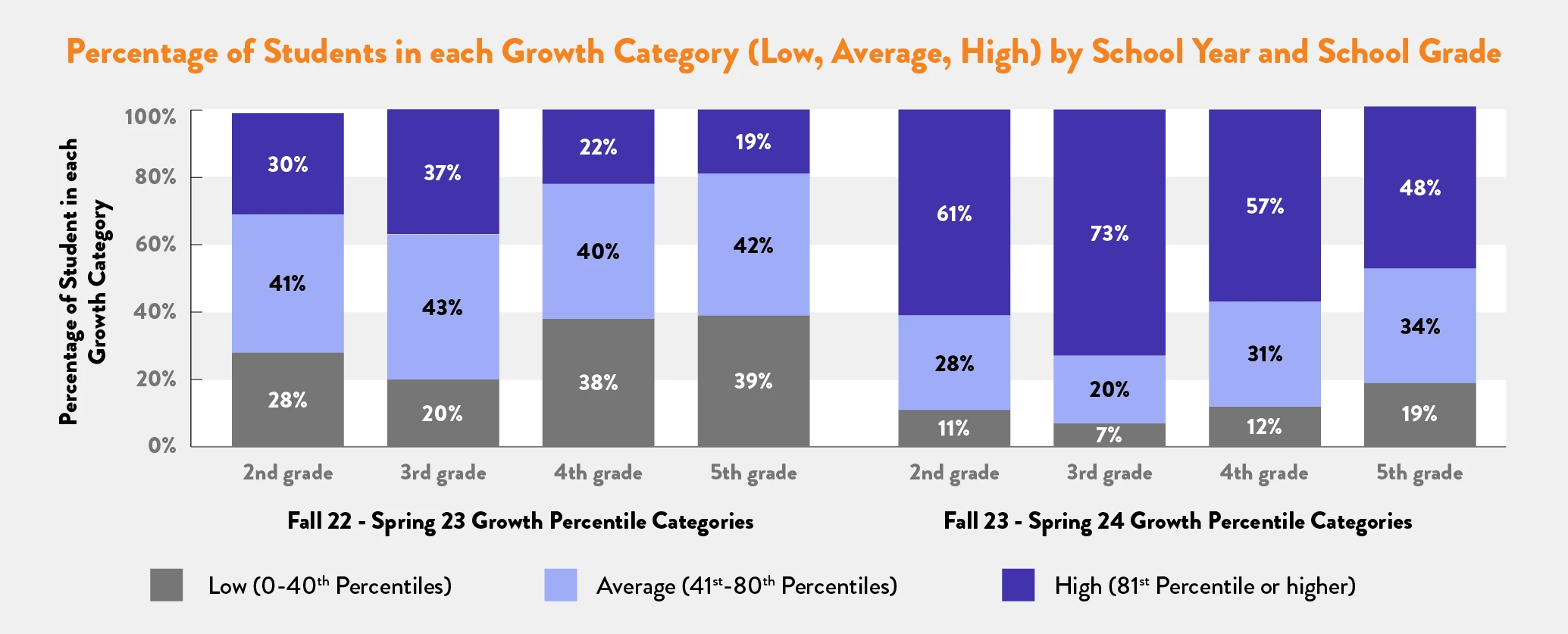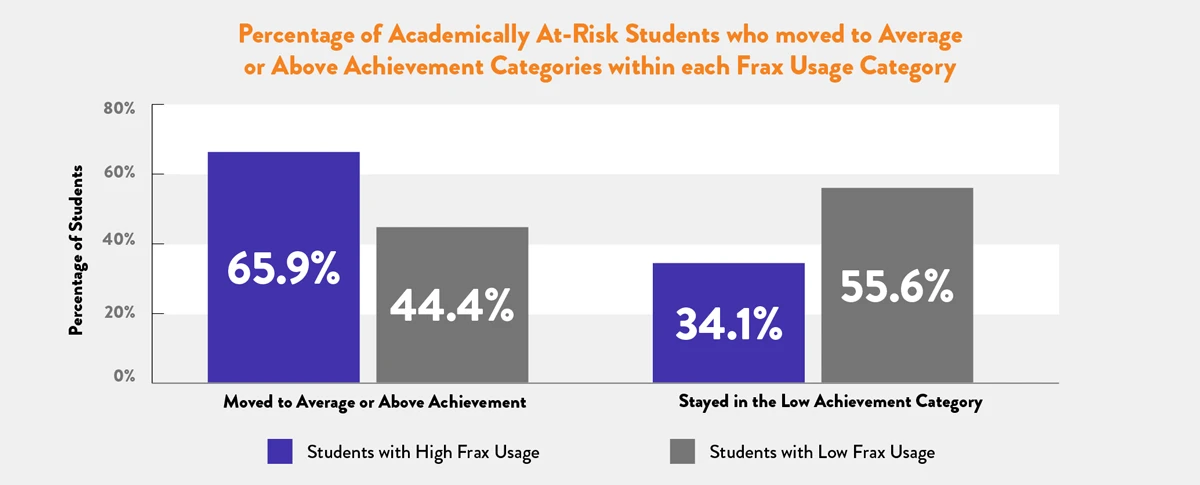
ExploreLearning’s Research Team recently partnered with Grandville Public Schools, a large, suburban school district in Michigan, to quantify the impact of adopting Reflex and Frax on their students' math achievement. With data from 1,430 students in 2nd-5th grades using the programs during the 2023-24 school year, the statistical analyses compared student growth pre-implementation to post-implementation on the NWEA MAP Math Growth Assessment and connected product use with student learning gains in math.
Reflex (for math fact fluency) and Frax (for understanding fractions) are game-based programs that are accessible and engaging to early learners. The study examined NWEA MAP Growth Math Assessment data in the district and compared it for users and non-users from pre-implementation (2022-2023) to post-implementation (2023-2024).
Dr. Scott Merkel, Assistant Superintendent of Grandville Public Schools, said that the district identified the need for fact fluency support through extensive work from a collaborative team looking at math achievement analysis. “We chose Reflex and Frax because it combines the conceptual understanding of numeracy with the practice for automaticity. We had worked with other programs and strategies that relied too much on memorization without the background understanding of number sense. This approach was not working. Our hope was that layering in Reflex and Frax, with our established core resources, would fill the foundational gaps we have seen. Additionally, we hoped that improvement in fact fluency skills, with improved automaticity, would allow students to attend better to grade-level concepts,” he said.
"Our hope was that layering in Reflex and Frax would fill foundational [instructional] gaps and that improvement in fact fluency skills, with improved automaticity, would allow students to attend better to grade-level concepts."
District students demonstrated larger math growth after implementing Reflex and Frax
The school district implemented Reflex and Frax very successfully in its first year. Many students showed high fact fluency growth in Reflex and completed a number of missions in Frax, with higher than expected growth on a math proficiency exam and higher growth than non-users. After just a few months of use, at-risk students were significantly more likely to reach grade-level proficiency and catch up to their peers.

The district saw notably higher fall–spring growth achievement in the 2023-24 school year after the district-wide implementation of Reflex and Frax compared to the previous school year. On the NWEA MAP, the growth percentile rank indicates how much a student grew in comparison to their peers. In all grades, at least 2x more students demonstrated high growth compared to the previous year. For instance, after implementing the Frax and Reflex, 73% of third-grade students fell into the high-growth category.
"[Teachers] consistently shared that students enjoyed the program and that it was helping. Year-end data validated this. Where implementation and use were consistent and at our goal target, students showed dramatic growth."
Key finding: Reflex use correlated with math achievement, regardless of baseline
A high number of students achieved fact fluency, with 2nd-grade students’ average initial fluency being 15% and the average max fluency achieved of 86%, with 71% of students reaching or exceeding 80% fluency. This usage translated into higher scores on their end-of-year math assessments. Greater Reflex usage was significantly correlated with higher math achievement scores, regardless of a student’s initial (beginning of the school year) math scores.

Key finding: Frax use linked to learning gains, especially for at-risk students
Students who used Frax in addition to Reflex demonstrated further growth! Students in 3rd-5th grades with high Frax use achieved a significantly higher percentage of projected growth between fall and spring testing than non-Frax users, making Frax an important tool for student advancement. Importantly, for those students most at-risk for academic struggles in math, Frax usage was related to achievement of grade-level standards in math. When students who scored in the low achievement categories used Frax, they were more likely than similar non-users to move to average or higher achievement categories, putting them on track for academic success in the following school year.

The importance of math facts and fractions
Math fact fluency and fractions are two areas where young math students struggle the most. They are also strong predictors of future success in math, uniquely predicting students’ standardized test scores and participation in career and college-prep math coursework, such as algebra. Given their importance for academic success, teaching fractions and math facts through targeted practice and support in these areas have the potential to impact district-wide success in math.
Reflex and Frax: Research-based math programs
Dr. Merkel and other administrators heard positive feedback from teachers and students throughout the year. “Reports consistently shared that students enjoyed the program and that it was helping,” he said. “Our end-of-year data validated this. Where implementation and use were consistent and at our goal target, students showed dramatic growth. Our data showed both annual growth and student proficiency levels higher than in previous years.”
Consider the ways these math programs could help students in your classroom. This study highlights the benefit of Frax and Reflex for all students as both a universal teaching tool and a targeted research-based math intervention. Students who used Reflex and Frax were better prepared to take on more challenging material in the following school year, supporting student confidence and making classroom instruction easier. More research behind Reflex and Frax shows that together, they help all students master foundational mathematical concepts that support achievement in math more broadly.
Move your students closer to meeting proficiency standards and set them up for future STEM engagement and achievement. Take out your free trial today.

